Rare 19th Century Bronze Horizontal Sundial by Watkins & Hill London
£2,600
Request Information
Follow Us
Rare 19th Century Bronze Horizontal Sundial by Watkins & Hill London
A beautifully weathered circular bronze sundial by Watkins & Hill, first half of the 19th century. The sundial was designed and calibrated to be used outside on a stone base in a garden in Southern England.
The engraved base plate, which has a lovely green-hued patina, has a Roman chapter ring with half-hour markers and minute divisions, on which the gnomon casts its shadow.
The sundial is signed by the makers at the bottom in the following manner: Watkins & Hill Charing Cross. In the middle is a compass rose to position the instrument in such a way that the time can be read. Above the middle is a Latin inscription: Cogitaui Dies Antionas (‘I thought upon the days of old’ (Psalm 76)).
Diameter: 10 inch (25.4 cm)
The makers:
The firm was founded by Francis Watkins, Senior (1723-1791), who worked for the famous maker John Dollond, among others, from 1706 to 1761. He invented a refracting telescope. In the period 1763-74 he was in partnership with Addison Smith, his former pupil, as Watkins and Smith. Watkins retired in 1784, when he was succeeded by his nephews Jeremiah Watkins (c. 1758-1810) and Walter Watkins (d. 1798). After Walter’s death in 1798 the business was continued by Jeremiah until his death in 1810. In 1808 he was listed as ‘J. Watkins, optician, 5 Charing Cross.’. In 1810 William Hill (d. 1847), an employee, ran the business on behalf of Jeremiah’s widow, Charlotte. In 1818 Jeremiah’s son Francis Watkins, Junior became a partner and the firm traded as Watkins and Hill, the makers of this sundial. They were active until 1847. The company remained in existence and Watkins & Hill exhibited at the 1851 Great Exhibition. Later, in 1857, they were taken over by the brothers C. A. and F. H. Elliott, the sons of William Elliott, a mathematical instrument maker.
Reference: Grace’s Guide.
Condition
Good. Wear consistent with age and use.
Dimensions
Height: 5.52 in. (14 cm)
Diameter: 10.01 in. (25.4 cm)
PREVIOUSLY SOLD

19th-Century Quarter-striking Carriage Clock by Leroy, Paris
The gilt-brass, so-called corniche case has bevelled glass panels on all sides so that the movement is entirely visible. It is surmounted by a shaped carrying handle. The white enamel dial has a Roman chapter ring, with Arabic five-minute and minute divisions.

Louis XV Style French Lantern
A superb large French brass lantern of Louis XV style, 19th century. The five light chandelier within a cylindrical lantern cast with scrolling acanthus, shells and vase-shaped finials with serpentine glazed panels, fitted for electricity.
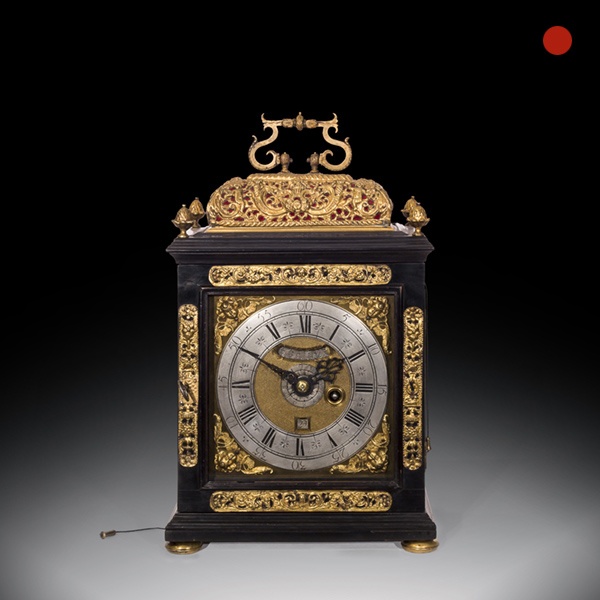
17th-Century Ebony Veneered Table Clock with Alarm and Pull Quarter Repeat
A magnificent sprung driven table clock by respected London maker George Etherington. The late 17th century, ebony- veneered table clock with alarm and pull quarter repeat on two bells, signed on the chapter ring Etherington London, and on the backplate Geo Etherington LONDON, c. 1695-1700.

Chinese Cloisonne Enamel Censer Modelled as a Crane 18/19th Century Qing Dynasty
The characterful and charming 18/19th-century cloisonne enamel censer, is modelled as a crane with straight gilt-metal legs, realistically detailed feet and claws, standing on a detailed gilt base. The neck gracefully curved above the plump hollow body brightly enamelled in turquoise.
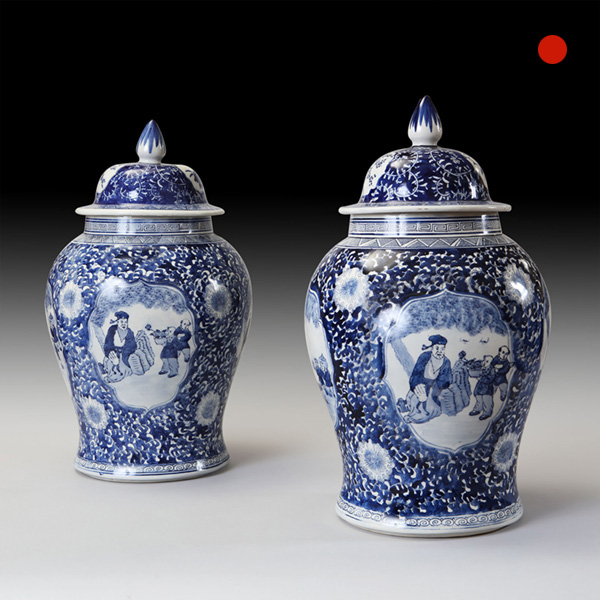
Large Pair of Blue and White Baluster Vases and Covers
Each jar is decorated with four reserves on a ground of scrolling flowers. The domed covers are surmounted by a finial. LATE QING DYNASTY (1644-1911).

Charles II Pewter Flat Lid Tankard
The Oak Interior – An extremely rare Charles II pewter tankard dated 1666. The tankard bears a crested stamp dated 1666 to the inside of the base. The flat caddy and ringed lid are stamped to the top with four hallmarks of the period and the initials C B. The beautifully crafted handle terminates at a bifurcated rams horn hinged thumb piece and the vessel sits on a multiple ringed and flared base.

19th-Century Quarter-striking Carriage Clock by Leroy, Paris
The gilt-brass, so-called corniche case has bevelled glass panels on all sides so that the movement is entirely visible. It is surmounted by a shaped carrying handle. The white enamel dial has a Roman chapter ring, with Arabic five-minute and minute divisions.

Louis XV Style French Lantern
A superb large French brass lantern of Louis XV style, 19th century. The five light chandelier within a cylindrical lantern cast with scrolling acanthus, shells and vase-shaped finials with serpentine glazed panels, fitted for electricity.

17th-Century Ebony Veneered Table Clock with Alarm and Pull Quarter Repeat
A magnificent sprung driven table clock by respected London maker George Etherington. The late 17th century, ebony- veneered table clock with alarm and pull quarter repeat on two bells, signed on the chapter ring Etherington London, and on the backplate Geo Etherington LONDON, c. 1695-1700.

Chinese Cloisonne Enamel Censer Modelled as a Crane 18/19th Century Qing Dynasty
The characterful and charming 18/19th-century cloisonne enamel censer, is modelled as a crane with straight gilt-metal legs, realistically detailed feet and claws, standing on a detailed gilt base. The neck gracefully curved above the plump hollow body brightly enamelled in turquoise.

Large Pair of Blue and White Baluster Vases and Covers
Each jar is decorated with four reserves on a ground of scrolling flowers. The domed covers are surmounted by a finial. LATE QING DYNASTY (1644-1911).

Charles II Pewter Flat Lid Tankard
The Oak Interior – An extremely rare Charles II pewter tankard dated 1666. The tankard bears a crested stamp dated 1666 to the inside of the base. The flat caddy and ringed lid are stamped to the top with four hallmarks of the period and the initials C B. The beautifully crafted handle terminates at a bifurcated rams horn hinged thumb piece and the vessel sits on a multiple ringed and flared base.
YOU MAY ALSO LIKE
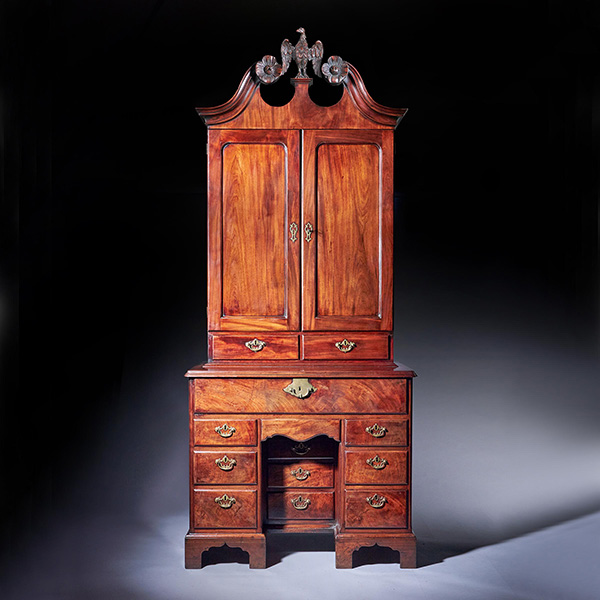
A George II Irish Mahogany Secretaire Kneehole Bookcase Att. C. Hearn
A George II Irish Mahogany Secretaire Kneehole Bookcase Att. C. Hearn £45,900Follow UsA George II Irish Mahogany Secretaire Kneehole Bookcase Att. C. Hearn An original and rare two-part George II 18th century Irish architects figured mahogany...
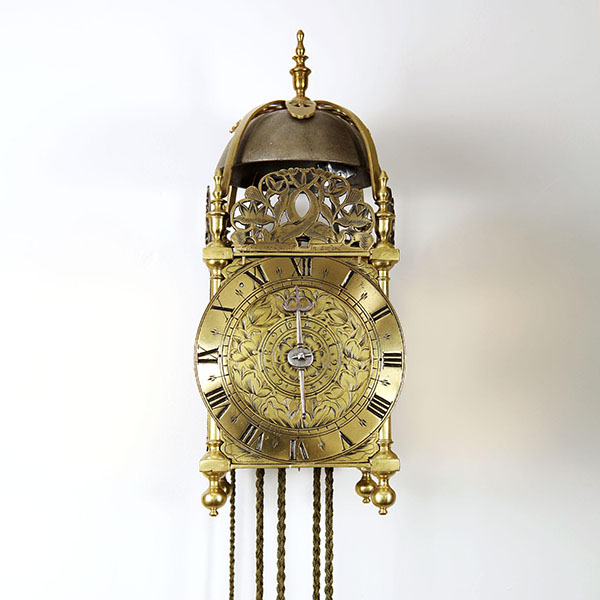
17th Century Lantern Alarm Clock by Johannes Quelch, Oxford
17th Century Lantern Alarm Clock by Johannes Quelch, Oxford £14,000Follow Us17th Century Lantern Alarm Clock by Johannes Quelch, Oxford An English 17th century lantern clock made of brass and iron, circa 1665-1670. The clock consists of going...

19th-Century Flame Mahogany Mantel Clock by BREGUET Raised by Lion Paw Feet
19th-Century Flame Mahogany Mantel Clock by BREGUET Raised by Lion Paw Feet £23,500Follow Us19th-Century Flame Mahogany Mantel Clock by BREGUET Raised by Lion Paw Feet EXTREMELY RARE MANTEL CLOCK WITH A FIGURED MAHOGANY-VENEERED CASE by A-L...

Unusual Ribbed Eight-Day Repeating Striking Gilt-Brass Gorge Case Carriage Clock
Unusual Ribbed Eight-Day Repeating Striking Gilt-Brass Gorge Case Carriage Clock £4,850Follow UsUnusual Ribbed Eight-Day Repeating Striking Gilt-Brass Gorge Case Carriage Clock CaseThe clock has a gilt-brass case which is a variation on the...
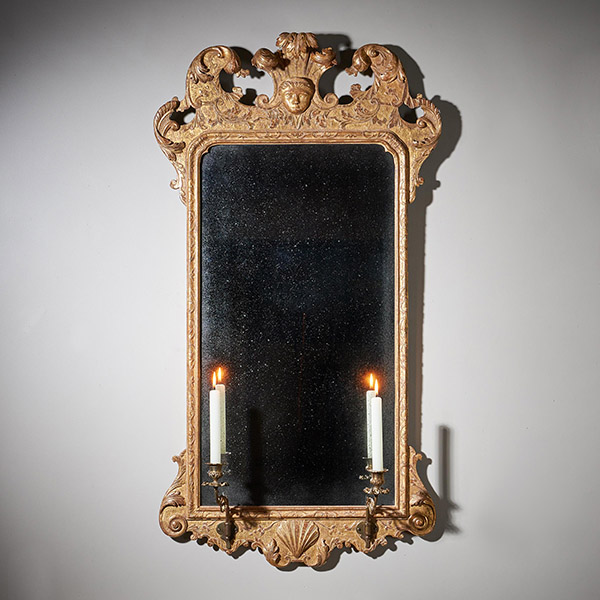
Fine 18th Century George I Gilt Gesso Pier or Console Mirror, Manner of Belchier
Fine 18th Century George I Gilt Gesso Pier or Console Mirror, Manner of Belchier £13,900Follow UsFine 18th Century George I Gilt Gesso Pier or Console Mirror, Manner of Belchier A fine and rare early 18th century George I Gilt Gesso pier or...

17th Century William and Mary Olive Oyster Lace Box, Circa 1680-1700
17th Century William and Mary Olive Oyster Lace Box, Circa 1680-1700 £3,900Follow Us17th Century William and Mary Olive Oyster Lace Box, Circa 1680-1700 A fine and rare 17th-century William and Mary period olive oyster lace box of perfect...

A George II Irish Mahogany Secretaire Kneehole Bookcase Att. C. Hearn
A George II Irish Mahogany Secretaire Kneehole Bookcase Att. C. Hearn £45,900Follow UsA George II Irish Mahogany Secretaire Kneehole Bookcase Att. C. Hearn An original and rare two-part George II 18th century Irish architects figured mahogany...

17th Century Lantern Alarm Clock by Johannes Quelch, Oxford
17th Century Lantern Alarm Clock by Johannes Quelch, Oxford £14,000Follow Us17th Century Lantern Alarm Clock by Johannes Quelch, Oxford An English 17th century lantern clock made of brass and iron, circa 1665-1670. The clock consists of going...

19th-Century Flame Mahogany Mantel Clock by BREGUET Raised by Lion Paw Feet
19th-Century Flame Mahogany Mantel Clock by BREGUET Raised by Lion Paw Feet £23,500Follow Us19th-Century Flame Mahogany Mantel Clock by BREGUET Raised by Lion Paw Feet EXTREMELY RARE MANTEL CLOCK WITH A FIGURED MAHOGANY-VENEERED CASE by A-L...

Unusual Ribbed Eight-Day Repeating Striking Gilt-Brass Gorge Case Carriage Clock
Unusual Ribbed Eight-Day Repeating Striking Gilt-Brass Gorge Case Carriage Clock £4,850Follow UsUnusual Ribbed Eight-Day Repeating Striking Gilt-Brass Gorge Case Carriage Clock CaseThe clock has a gilt-brass case which is a variation on the...

Fine 18th Century George I Gilt Gesso Pier or Console Mirror, Manner of Belchier
Fine 18th Century George I Gilt Gesso Pier or Console Mirror, Manner of Belchier £13,900Follow UsFine 18th Century George I Gilt Gesso Pier or Console Mirror, Manner of Belchier A fine and rare early 18th century George I Gilt Gesso pier or...

17th Century William and Mary Olive Oyster Lace Box, Circa 1680-1700
17th Century William and Mary Olive Oyster Lace Box, Circa 1680-1700 £3,900Follow Us17th Century William and Mary Olive Oyster Lace Box, Circa 1680-1700 A fine and rare 17th-century William and Mary period olive oyster lace box of perfect...










